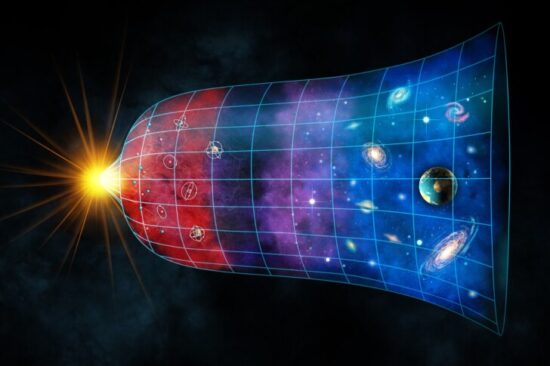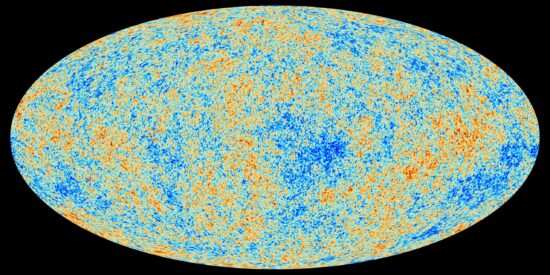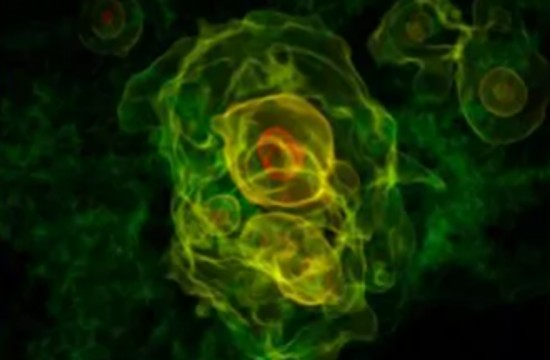How we came to exist is best stated in the Barenaked Ladies’ lyric “It All Started with the Big Bang,” the moment that space-time began that makes the beginning of The Universe. The early Universe was nothing like what we see today. We wouldn’t recognize it if we could visualize it. There was no discernible matter whether dark or lit.
But an astrophysicist at SUNY Stonybrook, Paul M. Sutter, is trying to shed “light” on what that early Universe was all about. He studies Dark Matter and gravity and what ties them together. A link between them may explain what happened the moment after The Big Bang. a period in astrophysical history called The Cosmic Inflation when rapid expansion occurred. This happened well before the matter that emerged in the primordial Universe eventually spawned the first stars, galaxies, and eventually us.

To this day scientists don’t know the time duration of The Cosmic Inflation. While they know it happened because they can see its remnants in cosmic microwave background radiation that is still detectable today, they don’t know how long this evolutionary phase lasted.

What were the driving mechanisms and material forces behind The Inflation? Cosmologists theorize that a particular type of quantum particle called an Inflaton was involved. What did Inflatons look like? The image below gives you an idea, appearing similar to a gas nebula but at a scale far smaller. Masses of swirling Inflatons powered The Cosmic Inflation in its first nanoseconds. As Inflatons aged, they degraded leading to the emergence of elementary particles.

Among these was Dark Matter which accounts for more than 80% of all the material found in the Universe today. But we are still in the dark about Dark Matter. We can see evidence of it in shadows that surround galaxies. It causes gravitational lensing when we look into the night sky to discern very distant objects. But is it even a particle? We aren’t sure because as much as we know it exists we still can’t examine it.
But two physicists in Finland in a paper recently submitted to the journal High Energy Physics and awaiting peer review may be able to shed light on Dark Matter and Inflatons that populated the early Universe. They see gravity as the key player in the interaction of the early elementary particles that filled The Universe after The Cosmic Inflation. That inflation didn’t last very long and it stopped after the Inflatons decayed into the multiple elementary particles that appeared. This period of time, referred to as the Preheating Phase, is described by some cosmologists as a time of “crazy physics.” That is, the rules of physics that we believe govern The Universe didn’t appear to apply.
So what role could gravity have played? A graviton is the description of gravity as a particle. It is characterized by quantum mechanical forces. In the Cosmic Inflation, and Inflations emerging, decaying and transitioning to Dark Matter, gravitons may have been the facilitator for the first forms of matter to emerge after the Preheating Phase. What’s so intriguing about this hypothesis is that it solves the mathematics that estimates the amount of Dark Matter in existence in The Universe.
This is quantum gravity at a nanoscale and a fundamental force in The Universe. It isn’t Einstein’s gravity but rather gravity that interacts with tiny particles. Where Einstein theorized that matter and mass bent the shape of space explaining gravity, quantum gravity is about interactions responding to electromagnetic energy. Einstein’s gravity explains why our moon orbits Earth rather than the other way around. The heavier mass bends space to make the smaller mass rotate around it. Einstein’s gravity is a relatively weak force. Gravitons, on the other hand, exert considerable force on small objects with which they interact.
So what conclusion can we draw about our future from studying the cosmological origins of our Universe? It is 13.82 billion Earth years old and will continue to exist for tens of billions of years into the future. Will the forces of quantum gravity at some point alter the rules of physics causing the expansion that started with The Big Bang to slow down, stop, or reverse? What role will gravitons and Dark Matter play? Will we see Dark Matter revealed in the next few decades as we build more powerful space and land-based telescopes to observe the night sky?
One thing is for certain, the cosmological model that we currently believe to be a good explanation for what we see when we look up is bound to change as we get answers to these and future questions. That’s what is so interesting about theoretical physics. It doesn’t solve the immediate questions about life and existence, but for nerds like me, the wonder of it all is pretty exciting stuff.
Postscript
A reader, Marino Hernandez, has sent a link to a fascinating video explanation of the Universe’s origins and the hot phase of The Big Bang. It features an explanation of what preceded the rapid expansion of The Universe we live in today and was created by Professor Ed Copeland, a physicist at the University of Nottingham in the UK.







